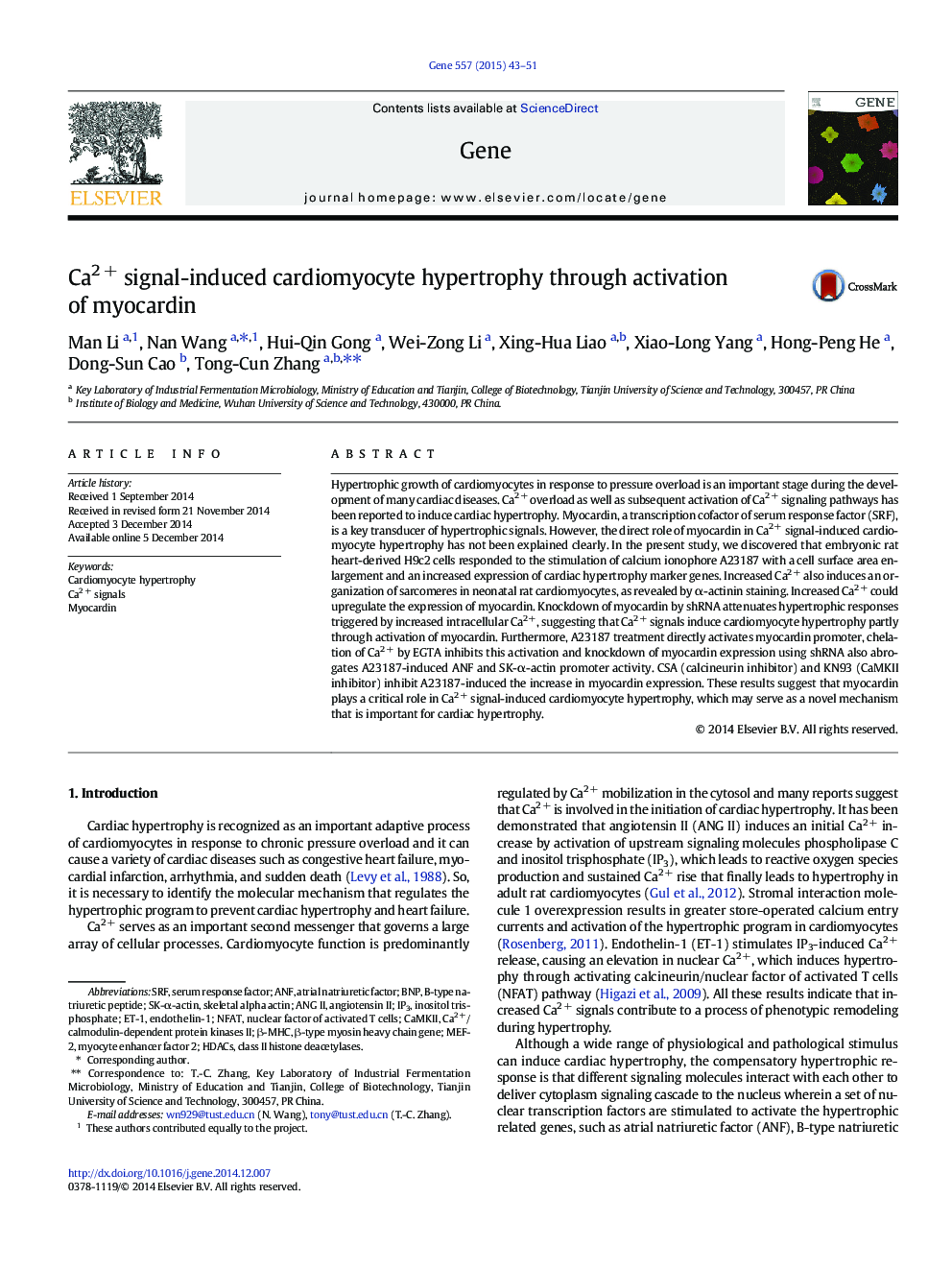| Article ID | Journal | Published Year | Pages | File Type |
|---|---|---|---|---|
| 2815940 | Gene | 2015 | 9 Pages |
•A23187-stimulated Ca2 + increase induces hypertrophy in H9c2 cells and neonatal rat cardiomyocytes.•Ca2 + increase upregulates the expression of myocardin.•Knockdown of myocardin inhibits Ca2 +-induced cardiomyocyte hypertrophy.•Ca2 + directly activates promoters of myocardin and hypertrophic genes.•Ca2 + signals increase the expression of myocardin by both calcineurin/NFAT and CaMKII–HDAC pathways.
Hypertrophic growth of cardiomyocytes in response to pressure overload is an important stage during the development of many cardiac diseases. Ca2 + overload as well as subsequent activation of Ca2 + signaling pathways has been reported to induce cardiac hypertrophy. Myocardin, a transcription cofactor of serum response factor (SRF), is a key transducer of hypertrophic signals. However, the direct role of myocardin in Ca2 + signal-induced cardiomyocyte hypertrophy has not been explained clearly. In the present study, we discovered that embryonic rat heart-derived H9c2 cells responded to the stimulation of calcium ionophore A23187 with a cell surface area enlargement and an increased expression of cardiac hypertrophy marker genes. Increased Ca2 + also induces an organization of sarcomeres in neonatal rat cardiomyocytes, as revealed by α-actinin staining. Increased Ca2 + could upregulate the expression of myocardin. Knockdown of myocardin by shRNA attenuates hypertrophic responses triggered by increased intracellular Ca2 +, suggesting that Ca2 + signals induce cardiomyocyte hypertrophy partly through activation of myocardin. Furthermore, A23187 treatment directly activates myocardin promoter, chelation of Ca2 + by EGTA inhibits this activation and knockdown of myocardin expression using shRNA also abrogates A23187-induced ANF and SK-α-actin promoter activity. CSA (calcineurin inhibitor) and KN93 (CaMKII inhibitor) inhibit A23187-induced the increase in myocardin expression. These results suggest that myocardin plays a critical role in Ca2 + signal-induced cardiomyocyte hypertrophy, which may serve as a novel mechanism that is important for cardiac hypertrophy.
